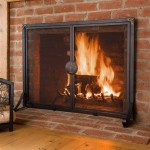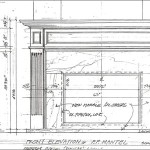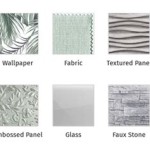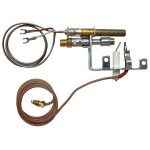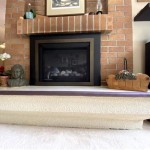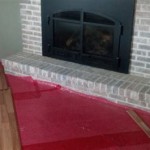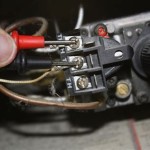Replacement Logs For Gas Fireplace Insert: A Comprehensive Guide
Gas fireplace inserts offer a convenient and aesthetically pleasing alternative to traditional wood-burning fireplaces. They provide warmth and ambiance without the hassle of chopping wood, building a fire, and cleaning up ashes. A key component of the visual appeal of a gas fireplace insert is the set of logs. Over time, these logs can degrade due to heat exposure, accidental damage, or simply aesthetic preferences changing. Consequently, understanding replacement options and factors to consider when selecting replacement logs for a gas fireplace insert becomes crucial.
This article provides a comprehensive guide to replacement logs for gas fireplace inserts. It will cover types of logs, materials used in their construction, factors to consider during selection, installation tips, and maintenance recommendations. Equipping homeowners with the knowledge necessary to make informed decisions regarding their gas fireplace insert logs is the primary goal.
Gas fireplace logs are not designed to last indefinitely. Frequent use, high flame settings, and improper cleaning can all contribute to their deterioration. Recognizing the signs of wear and tear, such as cracks, discoloration, or crumbling, is essential for maintaining both the aesthetic appeal and operational safety of the fireplace insert.
Types of Replacement Logs
Replacement logs for gas fireplace inserts can be categorized based on their design, material, and style. Understanding these categories facilitates the selection process and allows homeowners to choose logs that best match their aesthetic preferences and fireplace insert specifications.
Ceramic Fiber Logs: These are the most common type of replacement logs. They are manufactured from ceramic fibers, which are lightweight and resistant to high temperatures. Ceramic fiber logs are typically less expensive than other options and offer a realistic appearance. They are designed to withstand the direct heat of the gas flames without breaking down rapidly. However, they are also relatively fragile and can be susceptible to chipping or cracking if mishandled.
Refractory Cement Logs: Refractory cement logs are made from a mixture of cement and heat-resistant materials. They are heavier and more durable than ceramic fiber logs. They also tend to retain heat better, radiating warmth even after the fireplace is turned off. Their increased density provides a more substantial and realistic look. Refractory cement logs are generally more expensive than ceramic fiber logs but offer a longer lifespan and enhanced durability.
Vented vs. Vent-Free Logs: The type of logs required depends on whether the gas fireplace insert is vented or vent-free. Vented logs are designed for use in fireplaces that have a functioning chimney and require proper ventilation to exhaust combustion byproducts. Vent-free logs, on the other hand, are designed for use in fireplaces that do not require venting. They are designed to burn more cleanly and produce fewer emissions. It is crucial to use the correct type of logs for the specific fireplace insert to ensure safe and efficient operation. Using vented logs in a vent-free system or vice versa can lead to carbon monoxide buildup and other hazards.
Log Style and Aesthetics: Replacement logs are available in a wide variety of styles, mimicking different types of wood, such as oak, birch, or pine. They can also be arranged in different configurations to create varying visual effects, ranging from a neatly stacked pile of logs to a more natural and scattered arrangement. Considerations should be given to the overall style of the room and the desired aesthetic when selecting the log style. Some logs are designed with enhanced features such as glowing embers or charred details to increase realism.
Factors to Consider When Selecting Replacement Logs
Selecting the right replacement logs involves careful consideration of several factors, including size, compatibility, material, aesthetics, and cost. Taking these factors into account ensures that the new logs fit properly, function safely, and enhance the overall appearance of the gas fireplace insert.
Size and Compatibility: The size of the replacement logs must be compatible with the dimensions of the gas fireplace insert. Logs that are too large may obstruct the burner or interfere with the proper ventilation. Logs that are too small may not provide adequate visual coverage. Refer to the manufacturer's specifications for the fireplace insert to determine the appropriate log size and configuration. The burner system's design will dictate the log placement and interaction with the flames. Proper log placement is critical for achieving optimal flame patterns and heat distribution.
Material and Durability: As mentioned earlier, ceramic fiber and refractory cement are the two primary materials used in the construction of replacement logs. Consider the trade-offs between cost, durability, and aesthetic appeal when choosing between these materials. For homeowners seeking a budget-friendly option with a realistic appearance, ceramic fiber logs are a suitable choice. For those prioritizing durability and longevity, refractory cement logs are a better investment.
BTU Rating: The British Thermal Unit (BTU) rating of the fireplace insert is a critical consideration when selecting replacement logs. The BTU rating indicates the amount of heat the fireplace can produce. Ensure that the replacement logs are designed to withstand the heat output of the specific fireplace insert. Using logs that are not rated for the appropriate BTU level can lead to premature degradation or damage to the logs.
Aesthetics and Style: The visual appeal of the replacement logs is a subjective but important factor to consider. Select logs that complement the style of the room and enhance the overall ambiance of the fireplace. Consider the color, texture, and arrangement of the logs to create the desired visual effect. Some logs are designed with realistic details such as bark patterns, knots, and charred areas to enhance their authenticity.
Safety Considerations: Always prioritize safety when selecting and installing replacement logs. Ensure that the logs are compatible with the type of gas used (natural gas or propane) and that they are positioned correctly to avoid obstructing the burner or interfering with the pilot light. Improper installation of replacement logs can create a fire hazard or lead to carbon monoxide buildup. It is advisable to consult with a qualified technician if you are unsure about any aspect of the installation process.
Installation and Maintenance of Replacement Logs
Proper installation and maintenance are essential for ensuring the longevity and safety of replacement logs. Following the manufacturer's instructions carefully and performing regular maintenance can help prevent damage, prolong the life of the logs, and maintain the efficiency of the gas fireplace insert.
Installation Procedures: Before installing replacement logs, turn off the gas supply to the fireplace insert and allow the unit to cool completely. Remove the old logs carefully, taking note of their original placement. Refer to the manufacturer's instructions for the specific model of fireplace insert to ensure proper placement of the new logs. Avoid overcrowding the burner area, as this can impede airflow and reduce the efficiency of the fireplace. Ensure that the logs are positioned securely and that they do not come into direct contact with the burner.
Cleaning and Maintenance: Regular cleaning is crucial for maintaining the appearance and extending the lifespan of replacement logs. Dust and soot can accumulate on the logs over time, diminishing their visual appeal and potentially affecting their performance. Use a soft brush or vacuum cleaner with a brush attachment to gently remove dust and debris. Avoid using harsh chemicals or abrasive cleaners, as these can damage the surface of the logs. Inspect the logs regularly for signs of cracking, chipping, or discoloration. Replace any damaged logs promptly to prevent further deterioration.
Troubleshooting Common Issues: Several common issues can arise with replacement logs, such as uneven flame patterns, soot buildup, or pilot light problems. Uneven flame patterns can be caused by improper log placement or a malfunctioning burner. Soot buildup can be caused by incomplete combustion or a dirty burner. Pilot light problems can be caused by a clogged pilot light orifice or a faulty thermocouple. Consult with a qualified technician to diagnose and repair these issues. Avoid attempting to repair the gas fireplace insert yourself unless you are experienced and knowledgeable in gas appliance repair.
Professional Assistance: For complex installation or repair tasks, it is always advisable to seek professional assistance from a qualified gas fireplace technician. A technician can properly assess the fireplace insert, identify any potential problems, and perform the necessary repairs or installations safely and efficiently. Regular maintenance by a qualified technician can also help prevent costly repairs and ensure the long-term performance of the gas fireplace insert.
Selecting and maintaining replacement logs for a gas fireplace insert involves careful consideration of various factors. By understanding the different types of logs available, considering the size and compatibility, and performing regular maintenance, homeowners can enjoy the warmth and ambiance of their gas fireplace insert for years to come. Safety should always be the top priority, and professional assistance should be sought when necessary.

How Long Do Gas Logs Last To Replace Fireplace

Napoleon Gl18e Vented Gas Log Set 18 Inch

Warming Trend Update Gas Logs To Improve Performance And Appearance Walton

The Best Gas Log Sets For 2024 Fireplaces Direct Learning Center

Realfyre Rustic Oak Vented Fireplace Gas Log Set 16

Hargrove Classic Oak Vented Gas Fireplace Logs 15 Inch

How To Select And Install A Gas Fireplace Log Set Fireplaces Direct Learning Center

White Mountain Hearth Lsxxp Kit Refractory Ponderosa Complete Fireplace Log Set

American Gas Log Dundee Oak 30 In Vented Natural Fireplace Set With Complete Kit Manual Match Lit Do30hdmtch The Home Depot

Peterson Real Fyre 30 Inch Charred Oak Gas Log Set With Vented Natural Ansi Certified G46 Burner Manual Safety Pilot Bbqguys Sets Fireplace Logs
Related Posts

